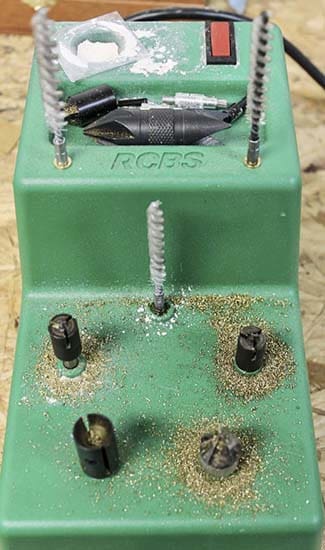
Like hunting, reloading has shown me that the real work starts as soon as the shot breaks. Before a spent case can be reloaded, it must be cleaned, resized, and made ready to receive primer, powder, and projectile. As the name implies, the RCBS Case Prep Center certainly helps with some of that.
Expect another piece on my process for brass prep, as it’s not germane to this particular review, but once the cases have shed their spent primer, been resized to spec, trimmed to length, and given a thorough cleaning in my stainless steel media tumbler, they’re almost ready for the three P’s – primer, powder, and projectile. But first, any primer crimping must be removed and the case mouth must be chamfered and then deburred.
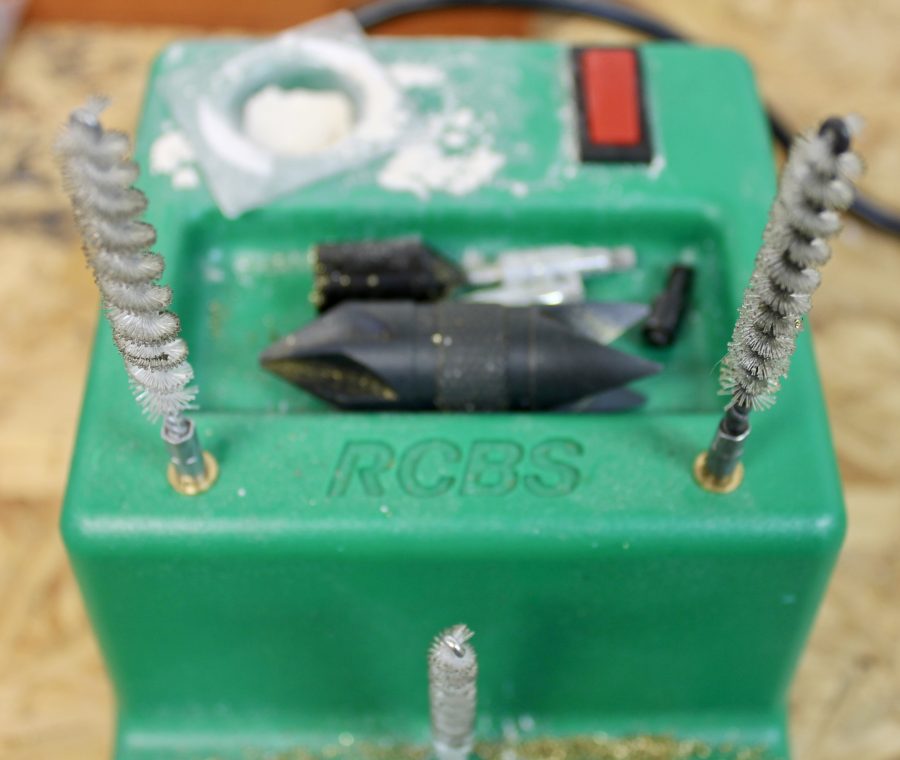
Thanks to five electrically driven, 8-32 female threaded stations, you can perform all of these tasks and any others you might like utilizing any of the included accessories. In the box, you’ll find the unit itself which is sturdy, fairly heavy, and sports a large gauge, grounded power cord. In the various packs and packets, you’ll find steel primer pocket brushes in both small and large sizes along with .30 and .22 caliber nylon brushes. Rounding out the group is a matched pair of heads for chamfering and deburring. In a lone packet is some powder marked as dry lube for case necks.
As I use a stainless steel pin tumbler to clean my brass, the inside of my case necks and my primer pockets are always shiny, clean, and free of carbon buildup. Should you not have access to such a wonderful tool, you can certainly give the primer pocket brushes a shot. I found them to be a bit harsh for my use as they quickly scored the primer pockets of the brass I tested them on. Further perplexing to me was that neither size seemed to fit my primer pockets. They freely rattled around inside the pocket, further damaging the surface. Into the little storage cubby they went, never to make an appearance again.
Likewise, the case neck brushes rarely saw use other than the occasional application of the aforementioned dry neck lube. I can’t seem to notice much of a difference between a lubed and non lubed neck, but the process is quick and doesn’t seem to have any negative effects, and hey, when is more lubrication bad?

What does see quite a bit of use, and is the reason I even picked up this little green monster, is the set of chamfering and deburring tools. I’ve tried any number of solutions to the problem of getting consistent chamfers on my case necks, and this seems to be the ticket. Simply hold the case down on the chamfering tool for a few seconds and then the deburring tool (above) for a few more to knock the edges off. At least in theory, that’s how it should work.
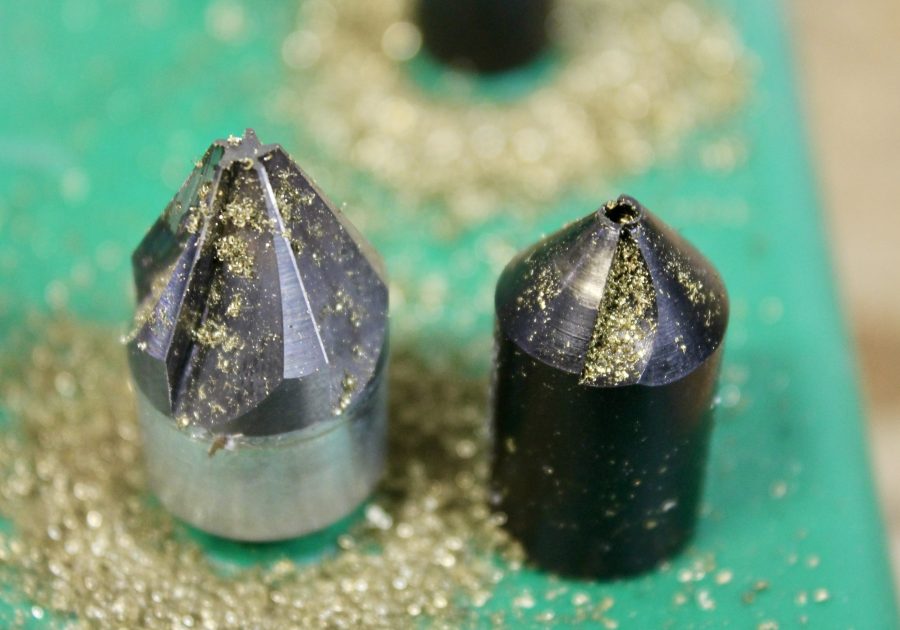
In practice, several seconds turned to a dozen or so as the chamfering tool’s weak steel started to wear down several hundred cases in. At some point, it stopped doing much more than burnishing the case mouth a touch and making the electric motor work a bit harder. $35 on Amazon and two days later, I had the much stouter model you see on the left in the picture above. Several hundred cases later, it’s still going strong with no signs of slowing down.
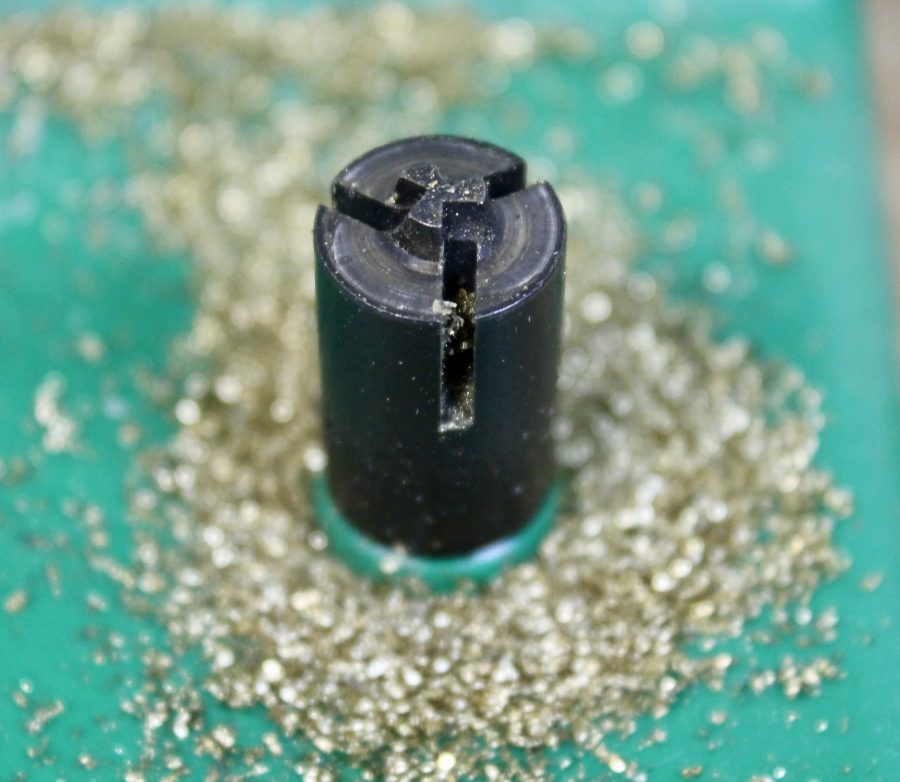
RCBS sells several additional accessories for the Case Prep Center, and one that can’t be overlooked is the set of military crimp removers. I purchased the small rifle and large rifle versions on Amazon as a matched set for less than $33 and they’ve helped me make use of quite a bit of scavenged Federal Gold Medal .223 and Gorilla loaded Federal .308 brass that I would have otherwise thrown out. If you don’t find yourself using military crimped brass, don’t bother. But if you do, these are handy little bits made of high quality steel that seem to do a good job of cleaning up the crimp so you can reprime spent brass.
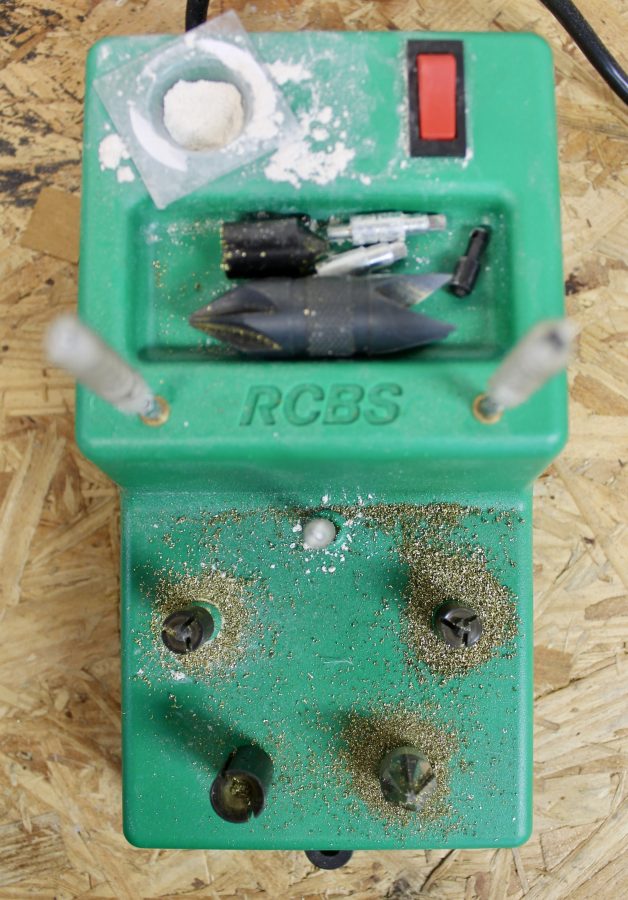 After another $60 or so in upgraded cutting heads, my bench top setup looks like the one above. My two crimped primer cutters are on the back row along with the .30 caliber brush, while the upgraded chamfering bit is on the right and the deburring head is on the left. I set my deprimed, resized, and trimmed brass in a bucket to the right of the machine and run each piece through the necessary steps, finishing with a final case neck brushing before it goes into the tumbler on my left for one last pass.
After another $60 or so in upgraded cutting heads, my bench top setup looks like the one above. My two crimped primer cutters are on the back row along with the .30 caliber brush, while the upgraded chamfering bit is on the right and the deburring head is on the left. I set my deprimed, resized, and trimmed brass in a bucket to the right of the machine and run each piece through the necessary steps, finishing with a final case neck brushing before it goes into the tumbler on my left for one last pass.
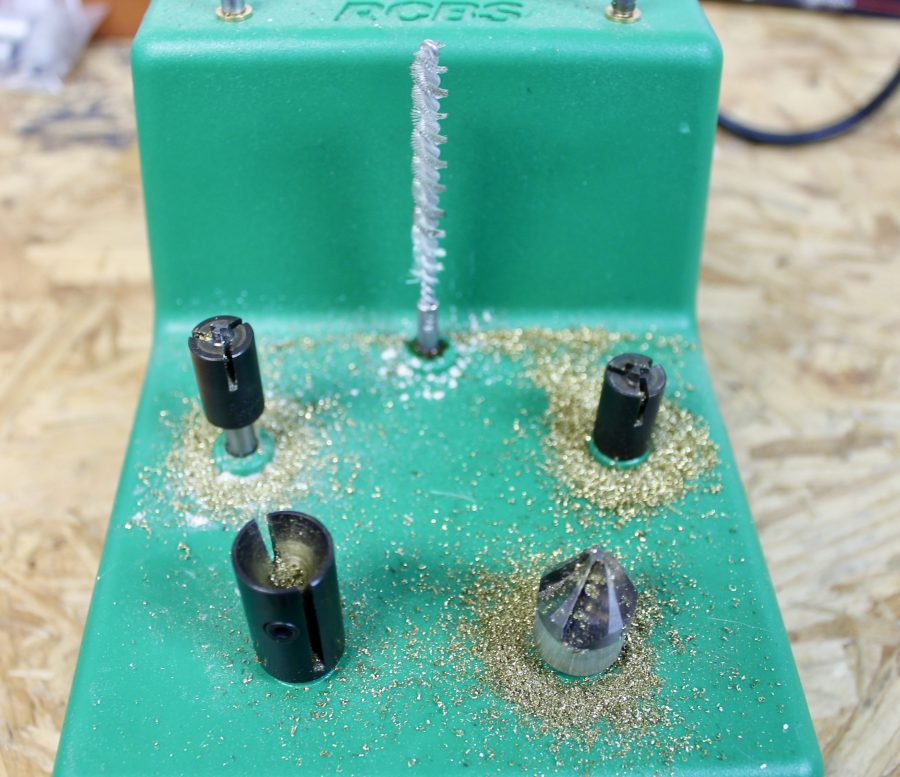
Specifications: RCBS Trim Mate Case Prep Center
- Material: Plastic housing, electric motor
- Includes:
- Large and Small primer pocket brushes
- Chamfering head
- Deburring head
- Small and Medium case neck brushes
- Packet of dry neck lube
- Price: $109.99
- Street Price: ~$100
Ratings (out of five stars):
Fit, Finish, Build Quality * * *
After a few dozen hours of run time, all is well and the little green box continues to hum along quietly. The included chamfering head is cheap and quickly wears down to a state of laughable ineffectiveness.
Customize This * * * * *
With five 8-32 receptacles, you can mix and match to your heart’s delight. I ended up purchasing the crimp removers as an additional accessory and if your scavenged brass suffers a similar crimp, you should too.
Overall Rating * * *
At roughly $100, the Case Prep Center isn’t a cheap item to keep on the bench, and if it had the upgraded cutter from the factory, this would have easily earned five stars. Unfortunately, you have to spend 35% of the purchase price to get a chamfering tool that won’t wear down after a few hundred rounds. I don’t begrudge RCBS for not including the crimp removers as that’s a bit of a specialized use case, and likely won’t hold value for a majority of reloaders. If it were mine to control, I’d delete the primer brushes as they’re functionally worthless, and upgrade the chamfering tool to the nicer model. I’d happily pay a few bucks more for a tool that was ready to go right out of the box.




I use a $20 cordless drill for all my trimming and deburring. Far more versatile too.
I actually use a similar method, but with a cheap $30 Black and Decker drill mounted to the workbench, locked in the “on” position, with a foot pedal controller and a router speed control in series.
I picked up one of these:
https://www.midwayusa.com/product/394805/lyman-power-chamfer-and-deburring-tool-set
which unfortunately looks to be discontinued, as well as the E-ZEE trim set:
https://www.midwayusa.com/product/128681/lyman-e-zee-trim-hand-case-trimmer-rifle-set
In the end, that’s only a few bucks cheaper, and it looks kind of “Bubba’d”, but it works pretty well.
Reloading – it’s a lot easier to do when not watching a high energy toddler and working 60-100 hours a week. I think I hear my Hornady progressive press laughing at me in the man cave…
Just keep repeating, “Overtime is funding my escape to a free state.”
(To maximize use of time, should one have a reloading station by the porcelain throne in the bathroom?) 🙂
I swage my primer pockets with a Dillon swager. Trim with sinclair ultimate trimmer driven with a small cordless drill.
My chamfer and deburr (prefer a VLD chamfer, especially with any flat base bullets) get chucked into my Powermatic 3520B wood lathe.
Eventually I hope to trim in the dillon 650.
Sometimes I do case prep with hand tools while watching a movie. It’s surprising how soon 500 rounds get done.
I actually started doing hand workouts because of how worn out my hands got using hand tools. Especially on 300 BLK brass.
The only power tool I use is one of those Lee cutter/case length gauges chucked into a cordless drill. I found that I get much more consistent results with my hand tools especially on chamfer and deburring the case mouths.
This prep center looks pretty cool though. One will probably eventually find its way onto my bench, after the charge master etc etc etc priorities and all that.
Since the tools are removing metal, is there a tool to gauge wall thickness?
Sure – A tube micrometer. I picked up a nice Starrett #569 for less than 50 bucks on the auction site. The anvil is .1875 in diameter so it won’t do 17 cal brass but it will do everything else.
EDIT – As in go, no go?
I can’t remember which came first in my rifle reloading set up, the case prep center or the ChargeMaster. They are both indispensable to me but the author is correct, the included cutter heads suck. The big mamajama carbide cutter is a must have. I just got something almost as good. The Hornady primer pocket uniformer (read crimp remover). I dont know if its carbide or not but it reams out primer crimps almost like they were butter. Screws right in the female gear driven power socket. Works like a champ. Even better than the big cone shaped carbide cutter. Much better.
I’ve had the same unit that is in this article for a half dozen years. It doesn’t get much use these days. I recently purchased a Giraud case trimmer that chamfers and deburrs the case mouth. So I don’t use the RCBS for that anymore. I also have several thousand cases I have removed the primer crimp from so that isn’t a need.
Finally, I too have switched to wet tumbling so I dont need to clean the primer pocket anymore.
Even still, when I have to process new range brass, this little guy is invaluable. One great add on I use is a primer hole uniformer. Its much faster than when it is normally mounted on a screw driver handle.
Don
That is a nice tool for handling all these tasks at one time in one small area on your bench. I went with the Lee quick trim for chamfering and deburring. It fits right on my press and if any cases have grown it takes care of that too. I don’t load that many at a time so it’s good enough for my needs. I found an old V-groove router bit in a cordless drill takes care of the primer crimp too. Right now all my .223 has been reamed so I’m done with that for awhile.
Do a review of Frankford Arsenal Platinum Series Case Prep Trim Center. It trims bottleneck cases off the shoulder with chamfer and debur tools right above. I’ve had no issues with the hardness of those tools
It is only $155 on Amazon which is only $20 more than this thing with upgraded tools. You can add what ever tools you want that run on a normal case prep center as well.
Comments are closed.